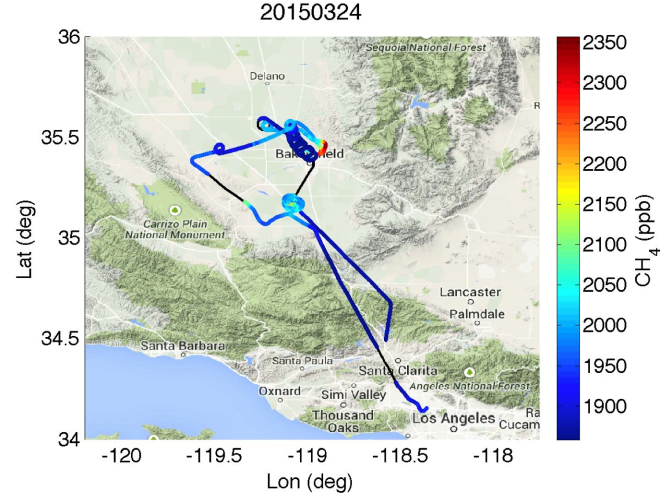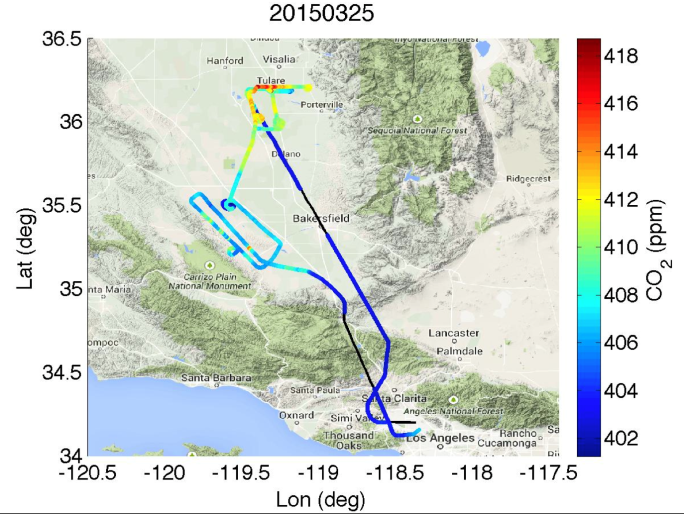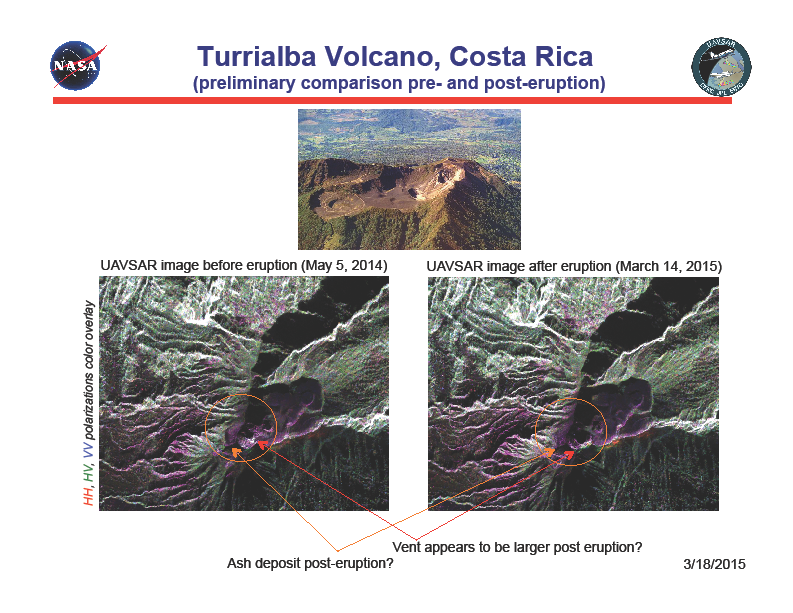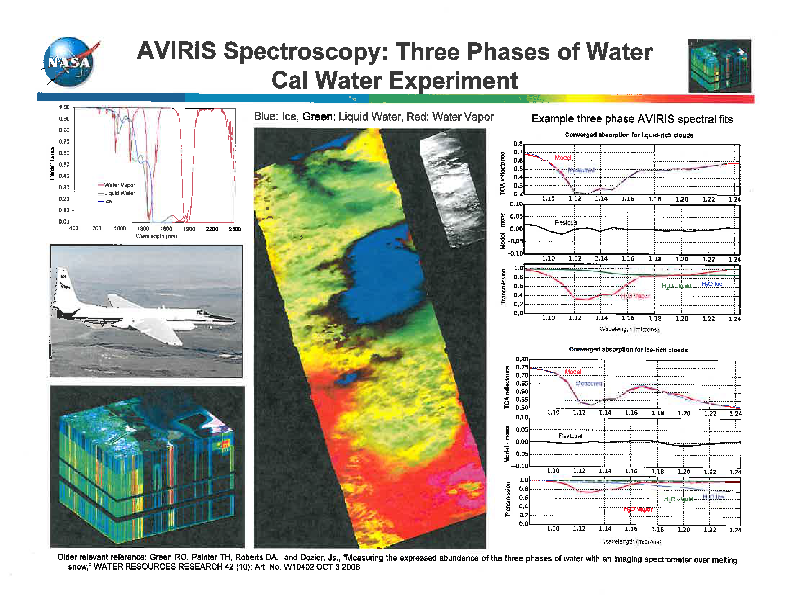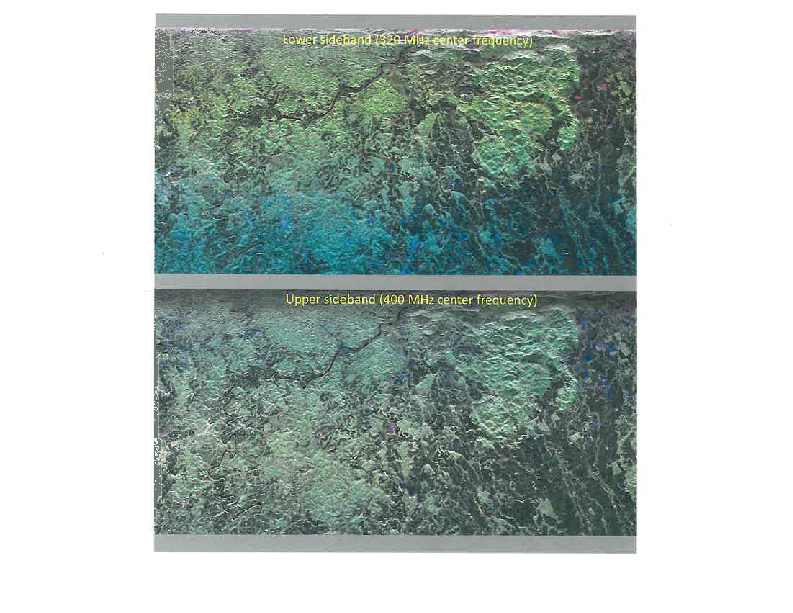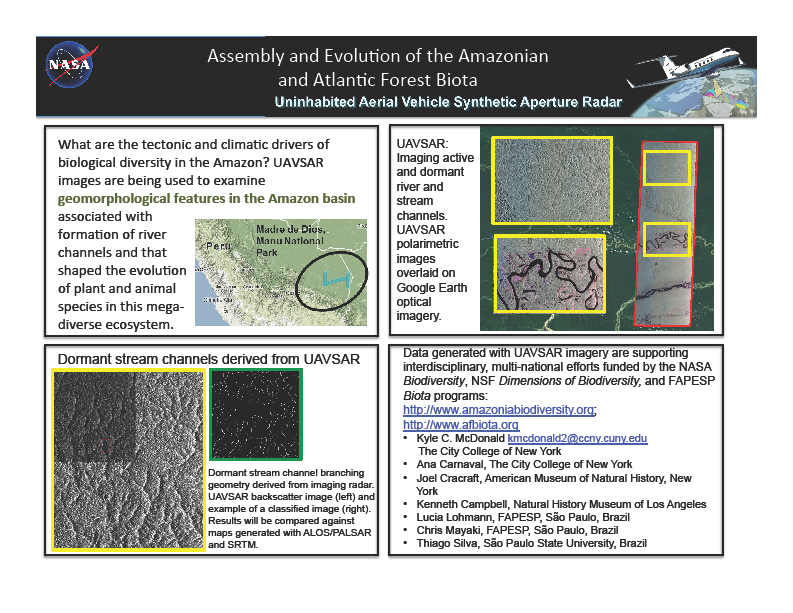We have had some unexpected excitement in Antofagasta, Chile last week. Heavy rains in Chile’s Atacama Desert region last Tuesday/Wednesday caused flash floods, major power and communication outages, as well as airport closure. We had to scrub two local flights out of Antofagasta due to air traffic disruption and headed to Santiago a day early to regroup. In addition, we were not able to secure Bolivia flight clearance to image Bolivia without a Bolivian observer onboard the aircraft. As a result, we were able to consolidate all the volcano observations near the Chile/Argentina border in two flights (Saturday and Monday). Quicklook imagery and flight track analysis showed that we acquired all planned data takes within the prescribed 10 m tube and produced some stunning imagery over the volcanoes and glaciers. Here’s a color composite of the polarimetric image of the Villarrica volcano we acquired on March 30. This volcano has erupted in early March and continues to be very active. We had an open house in Santiago yesterday (Tuesday) that was well attended by researchers and college students.


